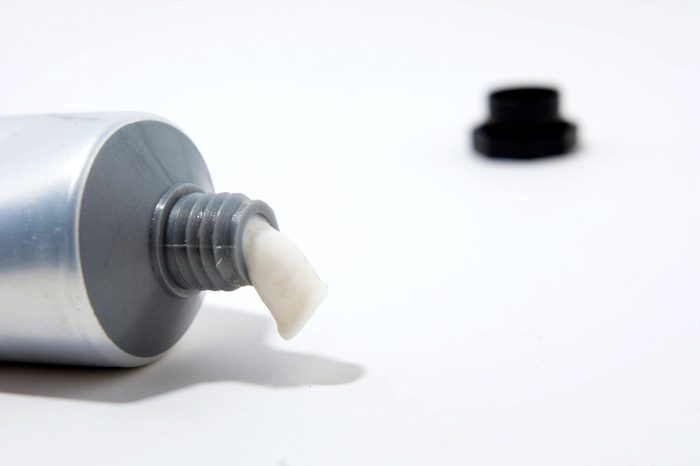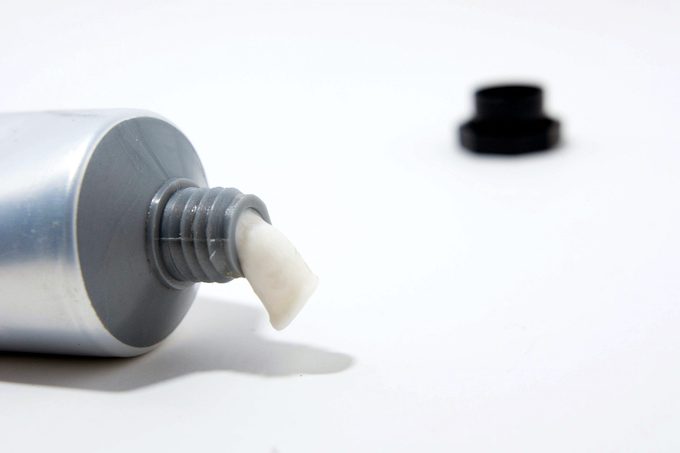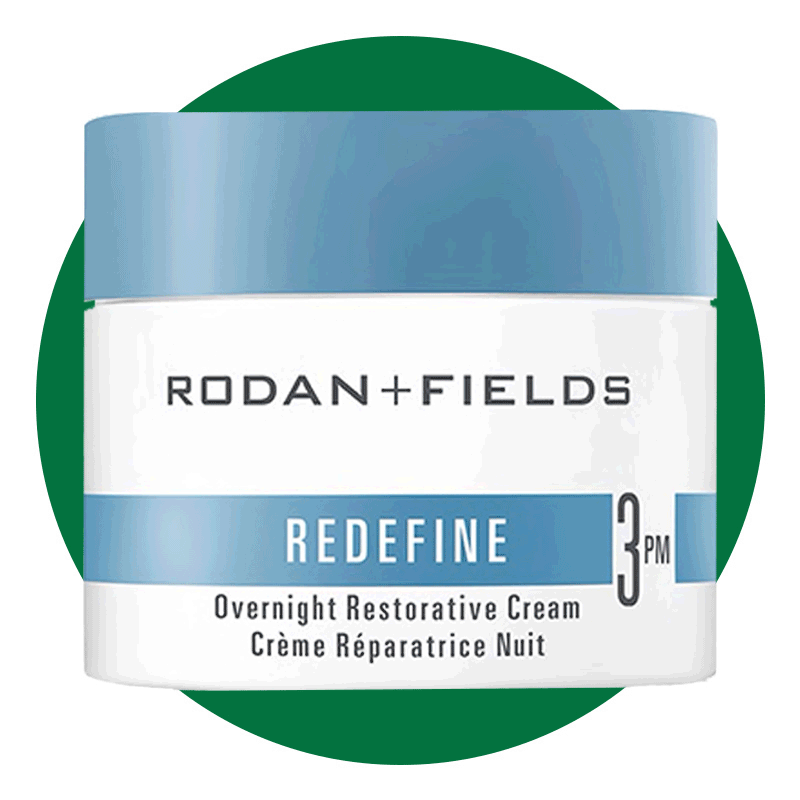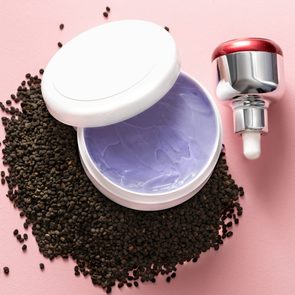Dermatologists Say This 1970s Anti-Aging Ingredient Is Still the Gold Standard for Gorgeous Skin
Updated: Jul. 19, 2023

Dewy skin is in ... but finding the product that delivers that radiant effect? It can be dizzying. Dermatologists reveal that today's greatest anti-aging treatment is simpler—and more of a classic—than most beauty lovers realize.
What is tretinoin?
Humans have tried some pretty wild things in our quest to keep our skin supple—and this is definitely not a new trend. The ancient Greeks and Romans swore by crocodile dung masks (how lovely), while Victorian women applied mercury to fade fine lines. Fast-forward to today, when we see celebrities and TikTok personalities trying everything from vampire facials to bee venom serums.
But in an era of skincare trends so fast-moving you could get whiplash (we’re looking at you, slugging), experts say the most powerful fountain of youth still comes in a tube that’s been around since the 1970s: Tretinoin. Though the substance itself is commonly referred to by the brand name “Retin-A”, this is often an inaccurate moniker.
Tretinoin, which is also known clinically as “retinoid acid,” is a derivative of vitamin A that was originally studied to treat a condition that caused thick, painful skin. History suggests researchers quickly recognized its ability to treat acne, and today many dermatologists still point to tretinoin as the literal cream of the crop for achieving an unparalleled healthy glow.
Why can tretinoin be good for skin?
Tretinoin is a prescription-strength ingredient included in topical creams or gels. Though you need to get it through your doctor, it’s commonly sold under brand names like Retin-A, Renova, and Avita. Tretinoin products can come in a variety of strength levels, ranging from a 0.025 to 0.1 percent concentration.
Dr. Brooke Jackson, MD, a board-certified dermatologist in Durham, NC, suggests that over the past few decades, tretinoin grew to be extremely well known for its potency in treating acne thanks to its ability to clear clogging from pores.
Then, as one 1993 study published in the New England Journal of Medicine found, tretinoin dramatically increased collagen production for participants who used it—while those who used a run-of-the-mill cream saw their collagen levels drop to the typical levels. Thanks to research like this, tretinoin has grown to be considered the gold standard for the treatment of fine lines, wrinkles, and sun damage. (It’s important to mention that sun protection is essential if you use it, since tretinoin strips away old skin cells to expose newer, healthy skin.)
So, does tretinoin actually slow aging?
Your skin protects your body, holding in hydration while working to block everything from pathogens to ultraviolet rays. To execute all this, skin cells take some hits—so your body constantly produces new ones to replace those that are worn and weathered.
Dr. Jackson explains that tretinoin works as an exfoliant, actually irritating the skin to speed up this natural cell turnover. “As your skin cells turn over faster, the dull, dry, damaged skin will be replaced with brand new skin cells.”
Tretinoin has also been shown to shrink oil glands and block inflammatory pathways that can lead to acne, says Dr. Tanya Kormeili, MD, Board Certified Dermatologist in Santa Monica, CA. And according to research published in Dermatologic Therapy, this activity even works to lighten acne scarring and hyperpigmentation.
But what about tretinoin’s supposed anti-aging claims?
Indeed, Dr. Kormeili explains, “[Tretinoin] can regulate the genes involved in collagen production.” Collagen is a protein that’s especially abundant in your skin. It’s essential for firmness and elasticity—but as we age, we produce less and less, which contributes to wrinkling, sagging, and losing that healthy, elastic texture.
From the onset of early adulthood, our body’s collagen production declines about 1.0 to 1.5 percent per year, according to a review published in Plastic and Aesthetic Research. But, Dr. Kormeili explains, tretinoin is powerful enough to cross multiple barriers and enter the center of our skin cells, where it switches on those DNA genes responsible for collagen production.
Will tretinoin get rid of wrinkles?

“It softens fine lines,” explains Dr. Debra Jaliman, board-certified NYC dermatologist, assistant professor of Dermatology at the Icahn School of Medicine at Mount Sinai, and author of Skin Rules: Trade Secrets from a Top New York Dermatologist.
So, tretinoin can’t totally eliminate your existing wrinkles—not like fillers or Botox would, Dr. Jaliman says. But a review of studies published in Clinical Interventions in Aging shows that most people using tretinoin can expect improvements to their wrinkles, along with upgrades in skin sallowness, texture, tightness, and pigmentation.
Tretinoin vs. retinol: which is better?
Tretinoin is part of a family of vitamin A-derived compounds known as retinoids. Its close cousin, retinol, is one of the most common—you’ve probably seen retinol listed in a wide range of over-the-counter anti-aging products.
But while it has similar properties to tretinoin, derms say it’s not worth skipping the prescription. “Often retinol is unable to penetrate into the cell, and so it’s less effective in turning on the [collagen] DNA genes,” Dr. Kormeili says. “It is also incredibly sensitive to light.” This means that depending on the packaging, your pricey cream might denature and lose any effectiveness.
Because it’s more potent, tretinoin also works faster than retinol, adds Dr. Jaliman. But you’re not going to speed things up by using them together—you’re more likely to just cause skin irritation. (Check out other skincare ingredients you should never mix.)
When should I start using tretinoin for anti-aging?
Dr. Jackson advises her teenage patients to keep using their tretinoin even after their acne clears up. “They will thank me when they are over 40,” she says.
“I think of tretinoin as an investment in your skin 401K,” adds Dr. Kormeili. “If you’re old enough to vote or drink, you can probably start using it.”
In fact, Dr. Jaliman says, the only people who really shouldn’t use tretinoin are pregnant women (there’s not enough research available to confirm its safety) and those with ultra-sensitive skin—such as if you have skin prone to rosacea or eczema.
How do I use tretinoin?
Remember: Tretinoin works as an exfoliant, irritating skin so that shiny new cells will replace dull, damaged ones faster. This means it can cause irritation like redness and flaking, Dr. Jackson explains. “Start by using it every other night, and increase to every night as tolerated,” she advises. “The trick is to balance [and] manage the irritation.” If these side effects don’t subside within a few weeks, speak with your doctor. Also, discuss whether the strength of your prescription dictates whether you should use tretinoin more, or less, frequently than every-other night.
Another key point about tretinoin? Your doctor will probably agree you should avoid using other strong acne treatments, like benzoyl peroxide or salicylic acid, in tandem with your prescription. Too much exfoliation action can do more harm than good.
And once more, don’t skimp on the sunscreen. Dr. Kormeili emphasizes that tretinoin can significantly sensitize your skin to the sun, so you’ve got to invest in a good SPF. To get you started, here’s our list of 12 sunscreens dermatologists absolutely love.
Want more tips and advice for healthy living? Sign up for The Healthy‘s daily newsletter and follow us on Facebook and Instagram. Also, keep reading:
- 7 Genius Nutrition Hacks a Dietitian Just Inspired Us to Try
- Is Magnesium Glycinate a Sleep Game-Changer? Here’s Why a Dietitian Gives This Supplement a Nod
- 7 Genius Nutrition Hacks a Dietitian Just Inspired Us to Try
- 12 Best Small Treadmills for Your Home or Apartment, According to Certified Fitness Experts
- Try This Trainer’s Full-Body Resistance Band Workout to Improve Your Body Shape and Strength

















